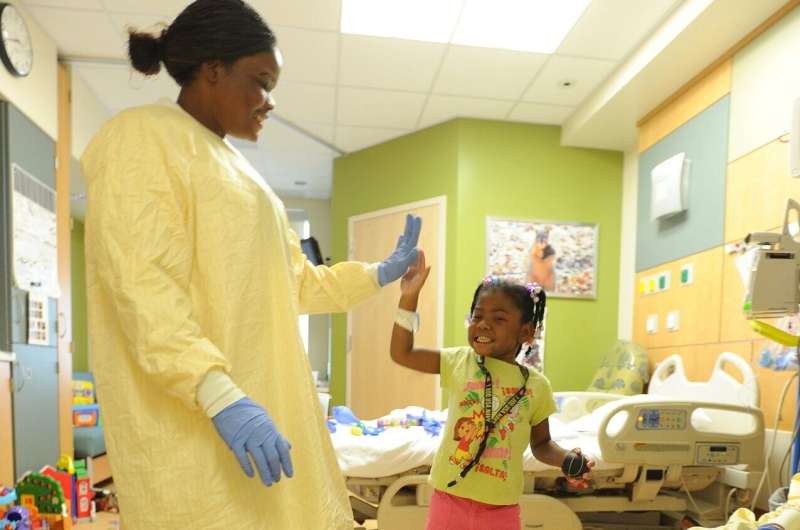This article has been reviewed according to Science X's editorial process and policies. Editors have highlighted the following attributes while ensuring the content's credibility:
fact-checked
peer-reviewed publication
trusted source
proofread
Hospital care for children has shifted from general hospitals to children's hospitals over last 20 years

Historically, most children in the United States who needed to be hospitalized were treated at general hospitals treating both children and adults. But the number of hospitals providing inpatient care for children has decreased over the last decade, and many of them struggled to keep up with the demand for children's care during a viral infection surge in the fall of 2022.
Now children are much more likely to be treated at children's hospitals that are concentrated into fewer locations, according to a new study led by UNC School of Medicine researchers.
"The inpatient care of children has shifted dramatically over the past 20 years," said Michael Steiner, MD, MPH, lead author of the study, which was published October 30 in the Journal of the American Medical Association.
"Children are much less likely now to be hospitalized at their local hospitals that care for both children and adults, and much more likely to be hospitalized in higher volume children's specialty centers. Additionally, other than neonates after birth, fewer older children are having inpatient admissions. These changes have important implications for hospital planning and readiness, systems to provide high-quality child-specific transport, and capacity needs at children's hospitals," said Steiner, who is pediatrician-in-chief at UNC Children's Hospital, Vice Chair of Clinical Affairs in the Department of Pediatrics, and Michael F. Durfee Distinguished Professor of Pediatrics at the UNC School of Medicine.
Steiner and his study co-authors reached these conclusions after analyzing data of pediatric inpatient discharges from nearly 4,000 hospitals in 48 states across the country between 2000 and 2019. More than 14 million discharges were included in their analysis. Birth hospitalization discharges were not included.
They found that annual inpatient discharges decreased from 2000 to 2019 by 26.5%. But during the same period, discharges from children's hospitals increased from 58.9% of total discharges in 2000 to 81.8% in 2019.
In addition, they found an increase in the number of children who were transferred from one hospital to another prior to their discharge. In 2000, 6.1% of pediatric patients experienced an interfacility transfer. In 2019, that increased to 18.8%, and 88% of these children were transferred to a children's hospital.
Study co-authors from UNC's Department of Pediatrics are Ashley G. Sutton, MD; John R. Stephens, MD; and Lindsay Chase, MD. Co-authors from outside UNC are Matt Hall, Ph.D., of the Children's Hospital Association; JoAnna K. Leyenaar, MD, Ph.D., MPH, of the Geisel School of Medicine at Dartmouth; and Corrie E. McDaniel, DO, of the University of Washington School of Medicine.
More information: Michael J. Steiner et al, Pediatric Hospitalization Trends at Children's and General Hospitals, 2000-2019, JAMA (2023). DOI: 10.1001/jama.2023.19268

















